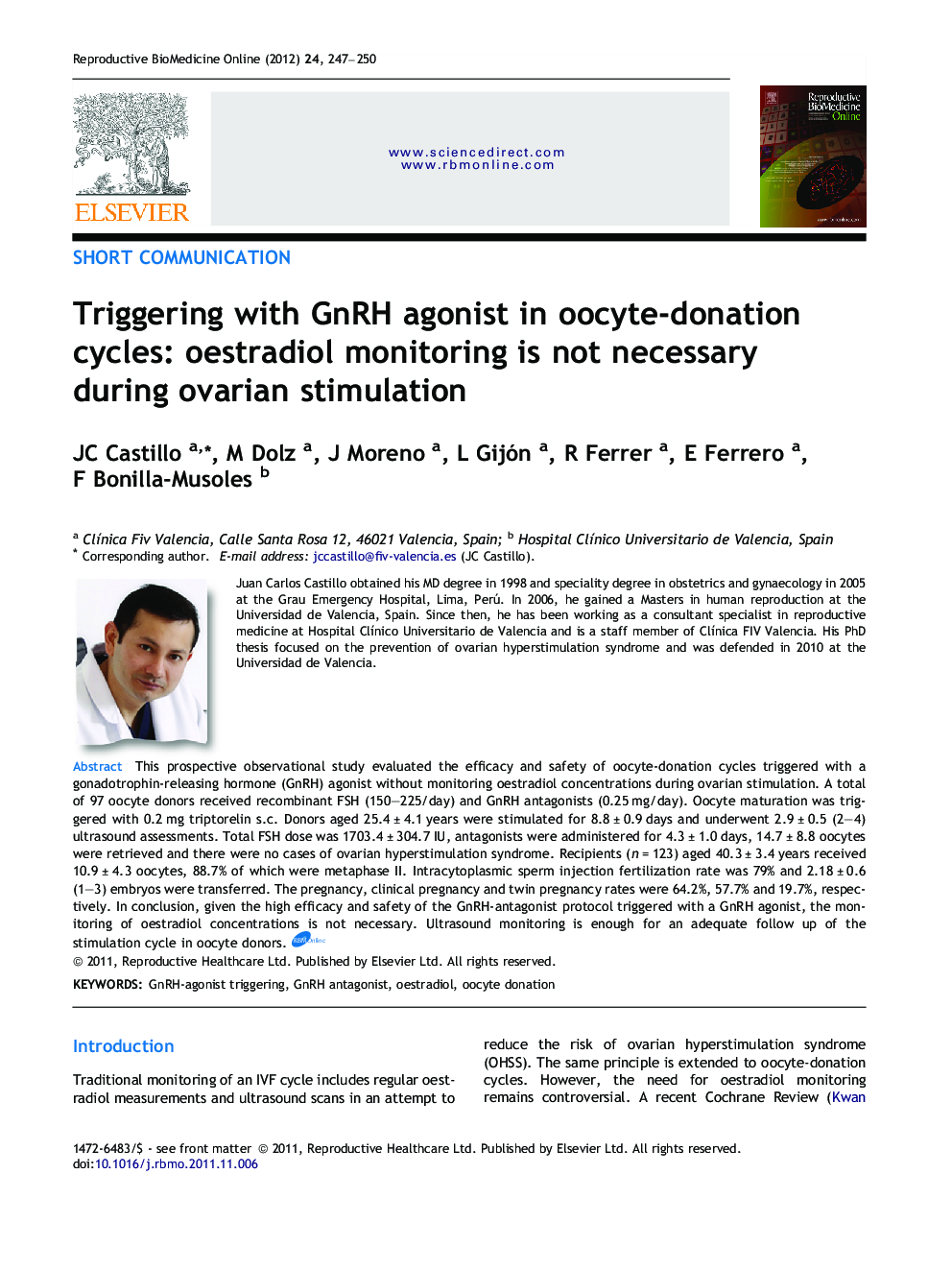| Article ID | Journal | Published Year | Pages | File Type |
|---|---|---|---|---|
| 3971184 | Reproductive BioMedicine Online | 2012 | 4 Pages |
This prospective observational study evaluated the efficacy and safety of oocyte-donation cycles triggered with a gonadotrophin-releasing hormone (GnRH) agonist without monitoring oestradiol concentrations during ovarian stimulation. A total of 97 oocyte donors received recombinant FSH (150–225/day) and GnRH antagonists (0.25 mg/day). Oocyte maturation was triggered with 0.2 mg triptorelin s.c. Donors aged 25.4 ± 4.1 years were stimulated for 8.8 ± 0.9 days and underwent 2.9 ± 0.5 (2–4) ultrasound assessments. Total FSH dose was 1703.4 ± 304.7 IU, antagonists were administered for 4.3 ± 1.0 days, 14.7 ± 8.8 oocytes were retrieved and there were no cases of ovarian hyperstimulation syndrome. Recipients (n = 123) aged 40.3 ± 3.4 years received 10.9 ± 4.3 oocytes, 88.7% of which were metaphase II. Intracytoplasmic sperm injection fertilization rate was 79% and 2.18 ± 0.6 (1–3) embryos were transferred. The pregnancy, clinical pregnancy and twin pregnancy rates were 64.2%, 57.7% and 19.7%, respectively. In conclusion, given the high efficacy and safety of the GnRH-antagonist protocol triggered with a GnRH agonist, the monitoring of oestradiol concentrations is not necessary. Ultrasound monitoring is enough for an adequate follow up of the stimulation cycle in oocyte donors.
